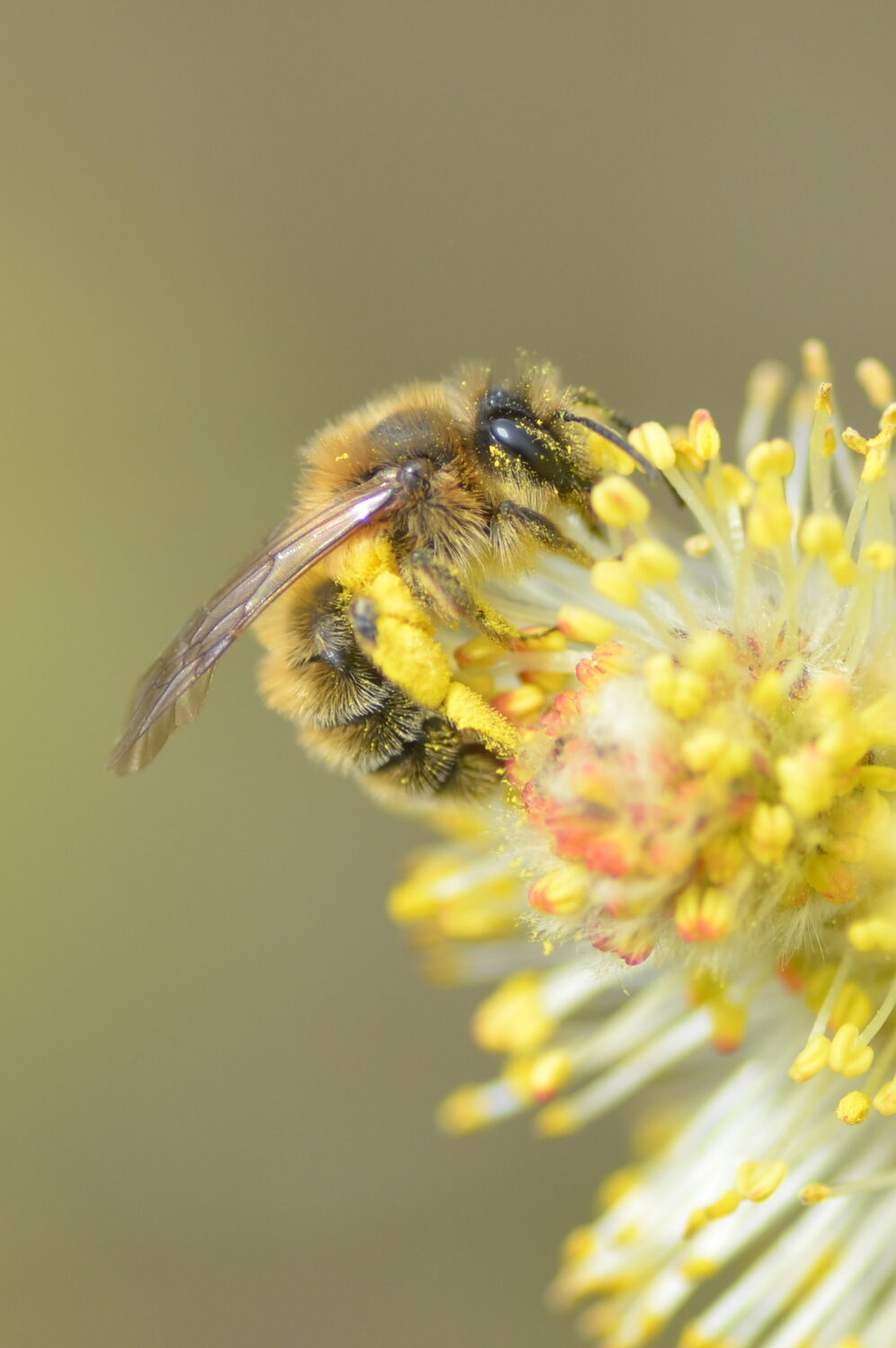Local naturalist, Charlotte Rankin, introduces a group of bees found in the North East that depend on Willow for their survival.
Early in the bee season, flowers are few and far between. When the catkins emerge, Willow provides an abundant source of nectar and pollen, and is a lifeline for early-flying pollinators including bees, butterflies, flies and moths. Willow is an important source of pollen for many bees and some species collect pollen exclusively from Willow. These species are known as the ‘Willow specialists’ and rely entirely on Willow as their source of pollen. Spring-flying, these bees match their flight period with the flowering period of Willow. In the North East, there are three Willow specialist bees. This includes a northern specialty, the Northern Mining Bee Andrena ruficrus.

Clarke’s Mining Bee Andrena clarkella
The Clarke’s Mining Bee is one of the first solitary bees to be seen in the year. In woodland, males are often observed flying up and down trees in search of resting females to mate with.
This bee is around the size of a honeybee. Females have a ginger-brown thorax with a black-haired abdomen. Their hind legs have orange pollen brushes, which are often covered in the yellow pollen of Willow.
Females can be found nesting close together in sandy soil or well-used footpaths. It can be found in both Northumberland and County Durham, and has even been recorded in urban parks where there is Willow.

Northern Mining Bee Andrena ruficrus
Unusual for a solitary bee, the Northern Mining Bee has a northerly distribution. It can be found in willow-rich areas in Scotland, the North East and Yorkshire. Females nest in bare or sandy soil in the sun.
In the North East, sightings are mainly from County Durham and South Northumberland. As of 2021, it was recorded for the first time in North Northumberland.
It is a small bee and of similar size to Gwynne’s Mining Bee Andrena bicolor. Females have a distinctive bright orange pollen brush on their hind legs. The hind legs are also orange.
The hair on the thorax is brown with white hairs around the sides and on the face.

Small Sallow Mining Bee Andrena praecox
The North East has the most northerly records for this bee in Britain, and is more widespread down south. The Small Sallow Mining Bee can be found where Willow is abundant, typically woodland and heathland edge, and old quarries.
Females are densely haired with ginger-brown hair across their body and on their face. Their hind legs have light brown pollen brushes.
Females nest in light soils, especially south-facing slopes, and can be found nesting close together to form aggregations. Pollen is mainly gathered from short-leaved Willows, typically Grey and Goat Willow.

Join the North East Bee Hunt
Urban or rural, beginner or expert, we need your help to record bees across the North East this spring and summer.
Your records can add to our understanding of bees in the region and inform conservation and monitoring efforts.
Taking part is easy and every record counts, wherever you live in the region. Records of all bee species are encouraged.